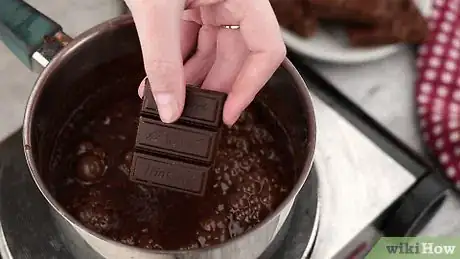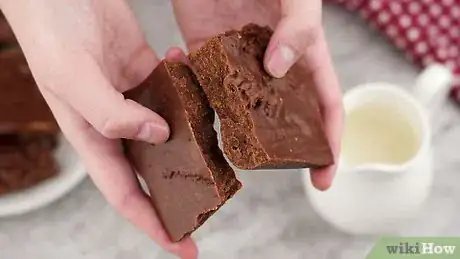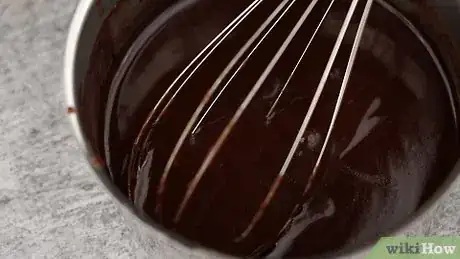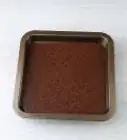This article was co-authored by wikiHow staff writer, Amy Bobinger. Amy Bobinger has been a writer and editor at wikiHow since 2017. She especially enjoys writing articles that help people overcome interpersonal hurdles but frequently covers a variety of subjects, including health and wellness, spirituality, gardening, and more. Amy graduated with a B.A. in English Lit from Mississippi College in 2011 and now lives in her hometown with her husband and two young sons.
There are 7 references cited in this article, which can be found at the bottom of the page.
The wikiHow Culinary Team also followed the article's instructions and verified that they work.
This article has been viewed 21,000 times.
Learn more...
Fudge is smooth, creamy, and decadent—the perfect treat for chocolate lovers. But when you try making fudge at home, it's notoriously tricky to get that perfect texture. Your fudge might turn out too hard, too soft, grainy, or separated, and you might not even know why. Luckily, we have a few tricks that might help you salvage your sweet treat, so don't give up on your chocolatey dreams just yet!
Steps
Can you fix fudge that seized?
-
1Add solid chocolate or fat if the chocolate was overcooked. If the temperature of your fudge gets a little too high, the sugars in the chocolate will clump up and separate from the fats. This creates a lumpy mess, but you may be able to save it. Put a few squares of solid chocolate into the bowl with the seized fudge and stir everything together until the solid chocolate melts. That could help reintegrate the fudge.[1]
- You might also be able to add a little bit of cocoa butter or vegetable oil to the mixture. There aren't any exact measurements for this—start with maybe 1⁄4 tsp (1.2 ml) and work your way up from there. You may not get the same perfectly smooth fudge as you would have before, but it's better than wasting all of that yummy chocolate!
- If the chocolate was scorched, it will have a burnt taste, so just throw it out.[2] Also, the next time you use that recipe, consider shortening the boiling time.[3]
-
2Make a fudge sauce if the chocolate seized from liquid or cold. Chocolate is finicky. If even a little bit of moisture gets into your bowl, the fudge will seize. The same thing will happen if the chocolate gets cold too quickly. In either case, there's not really anything you can do to save the fudge. However, you can still enjoy the chocolate by adding milk or cream to create a delicious fudge sauce.[4]
- Place the fudge over low heat and slowly whisk in about 1 US tbsp (15 ml) of milk or cream at a time. Keep adding liquid and stirring until the fudge sauce is thick, glossy, and smooth.
References
- ↑ https://www.greatbritishchefs.com/how-to-cook/how-to-fix-seized-chocolate
- ↑ https://food52.com/blog/14453-what-to-do-when-your-chocolate-seizes
- ↑ https://www.chicagotribune.com/news/ct-xpm-2008-04-23-0804210321-story.html
- ↑ https://www.greatbritishchefs.com/how-to-cook/how-to-fix-seized-chocolate
- ↑ https://www.chicagotribune.com/news/ct-xpm-2008-04-23-0804210321-story.html
- ↑ https://www.ricardocuisine.com/en/articles/food-chemistry/400-for-successful-fudge-every-time
- ↑ https://www.latimes.com/archives/la-xpm-1992-02-13-fo-2727-story.html
- ↑ https://www.latimes.com/archives/la-xpm-1992-02-13-fo-2727-story.html
- ↑ https://www.latimes.com/archives/la-xpm-1992-02-13-fo-2727-story.html
About This Article
To fix fudge, you can try a few simple things. If the chocolate was overcooked, try adding solid chocolate or fat. However, if you chocolate seizes because it either got too cold or there was too much liquid added to it, you might consider making a fudge sauce. If your fudge is hard and crumbly, add 3–4 US tbsp (44–59 ml) of whipping cream and remelt it. If your fudge is too soft, bring it back to a boil with 1–2 US tbsp (15–30 ml) of cream. You might be able to fix fudge that’s too grainy by stirring in whipping cream over low heat.














































